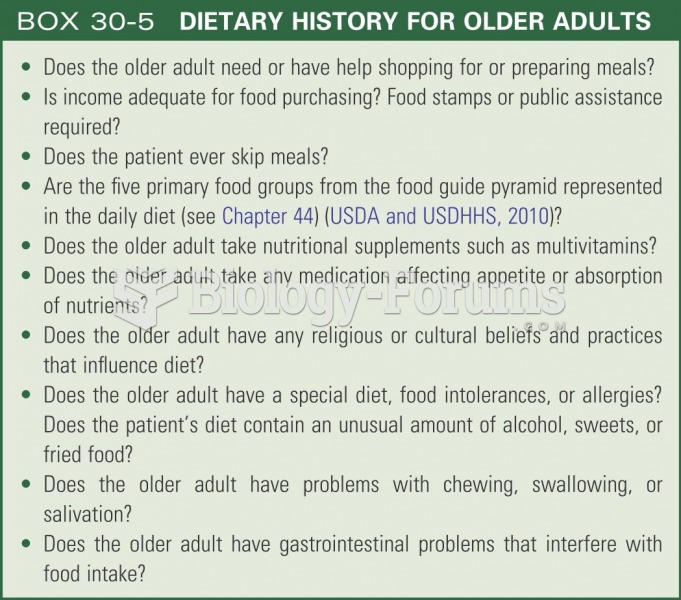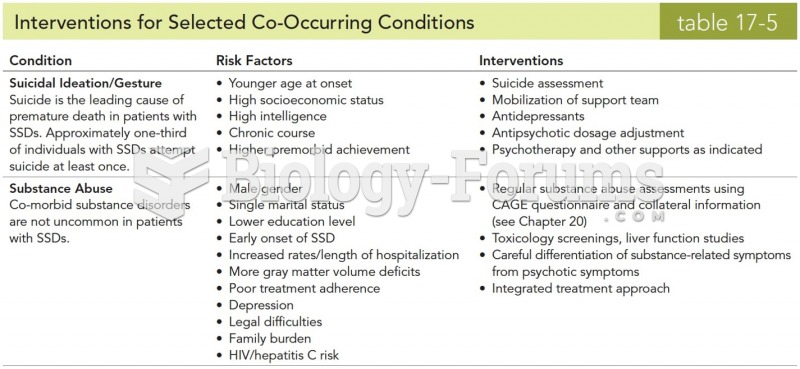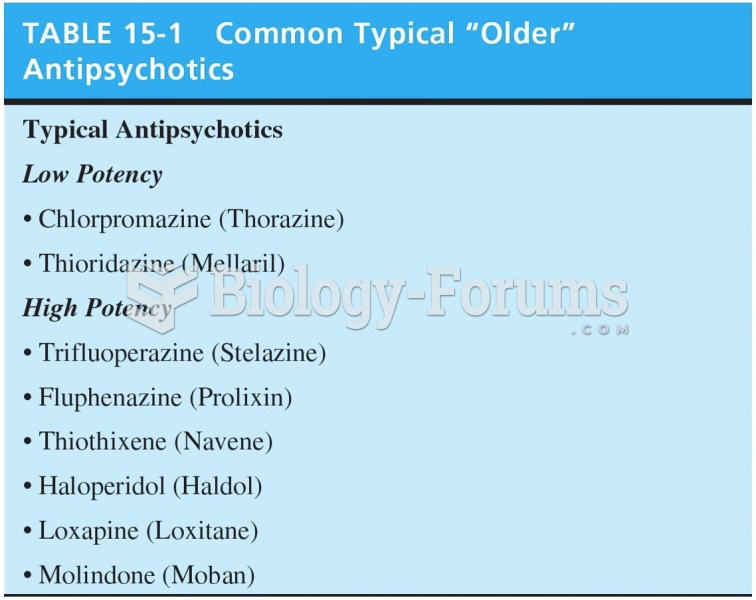|
|
|
Did you know?
The average adult has about 21 square feet of skin.
Did you know?
Approximately 500,000 babies are born each year in the United States to teenage mothers.
Did you know?
Drying your hands with a paper towel will reduce the bacterial count on your hands by 45–60%.
Did you know?
Medication errors are three times higher among children and infants than with adults.
Did you know?
Most childhood vaccines are 90–99% effective in preventing disease. Side effects are rarely serious.






